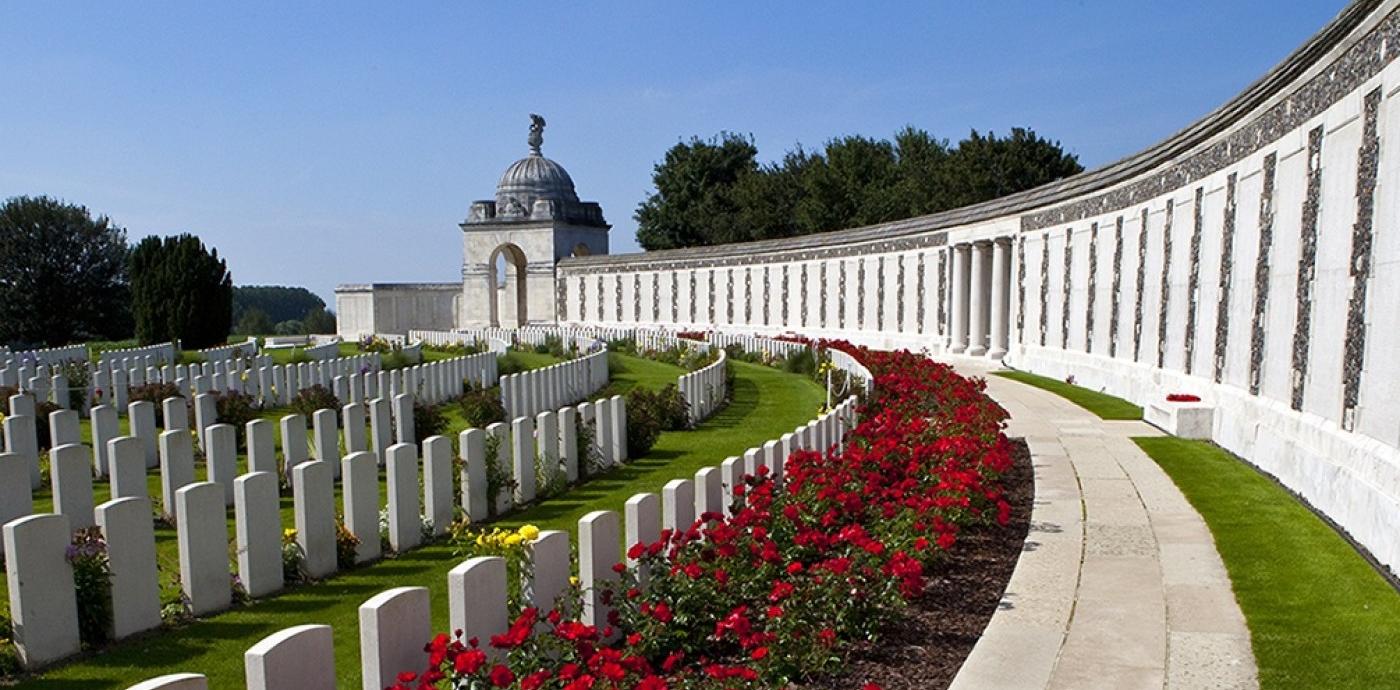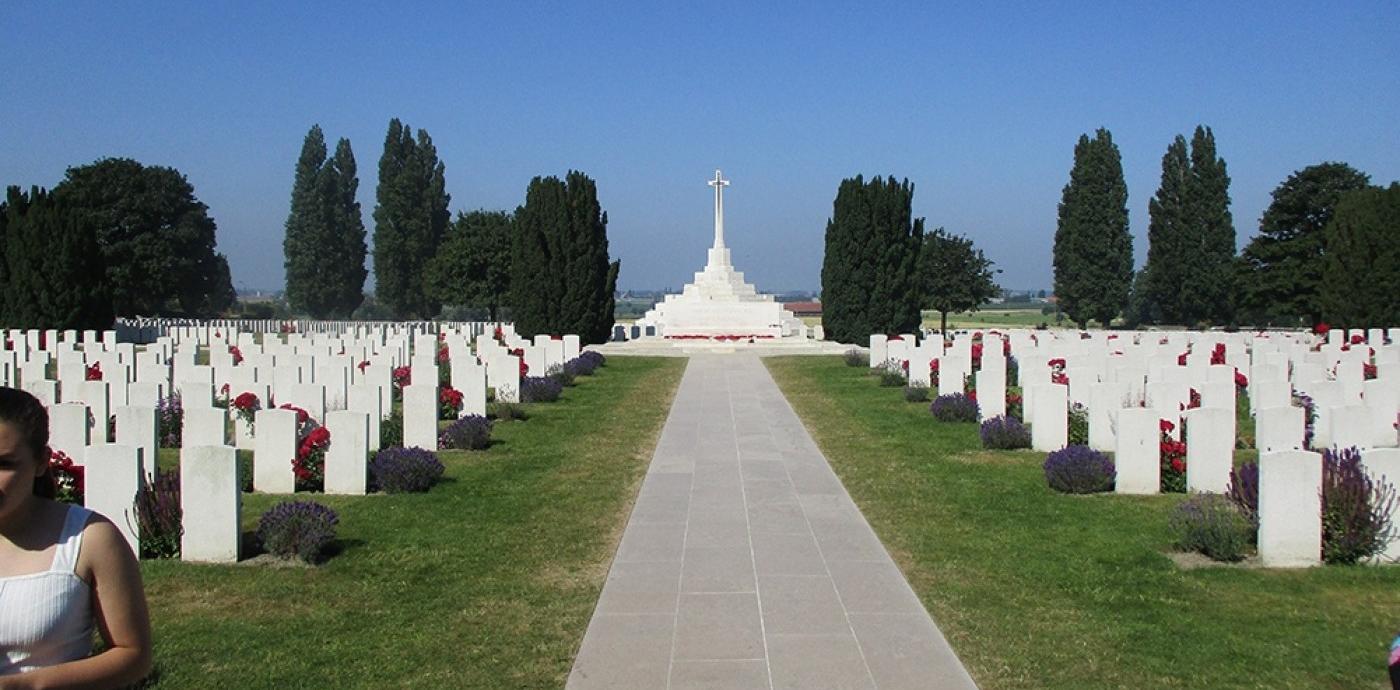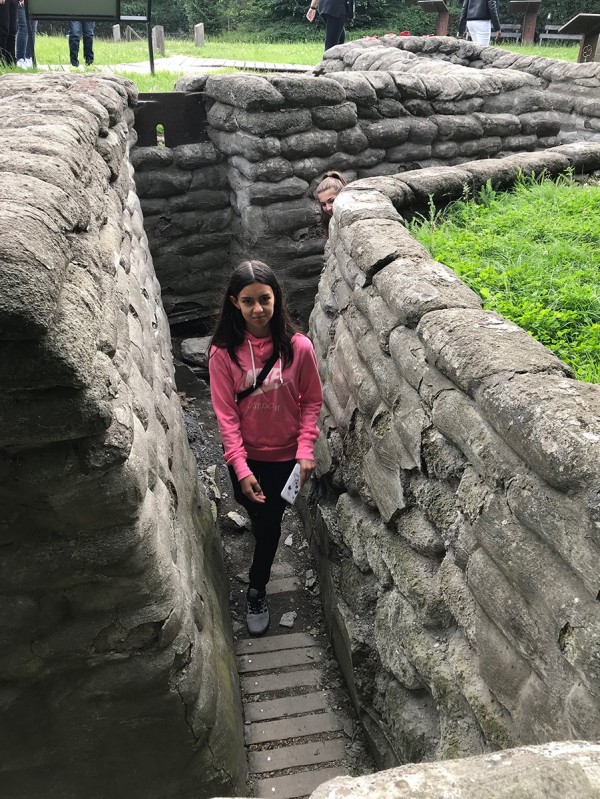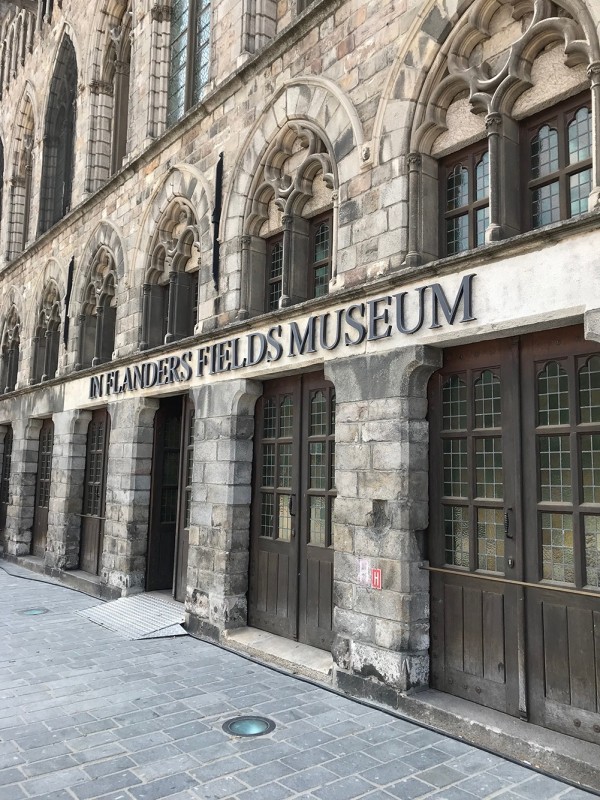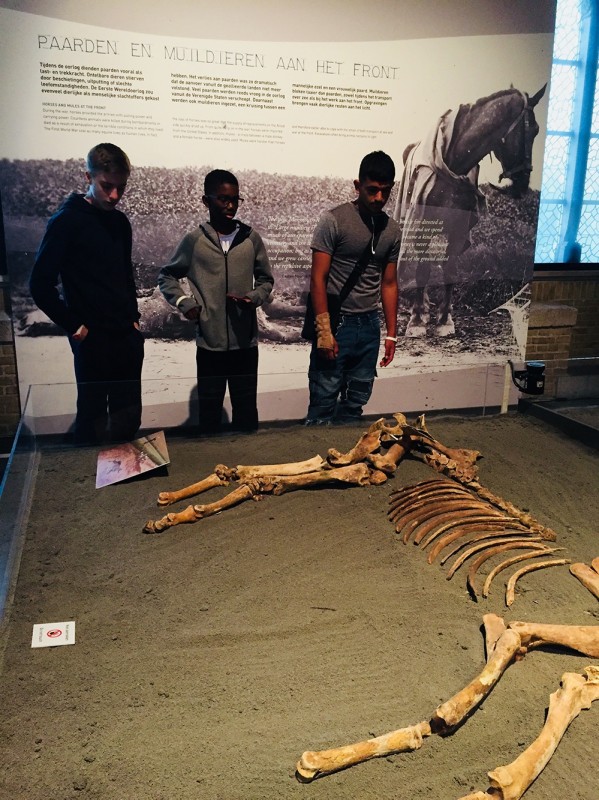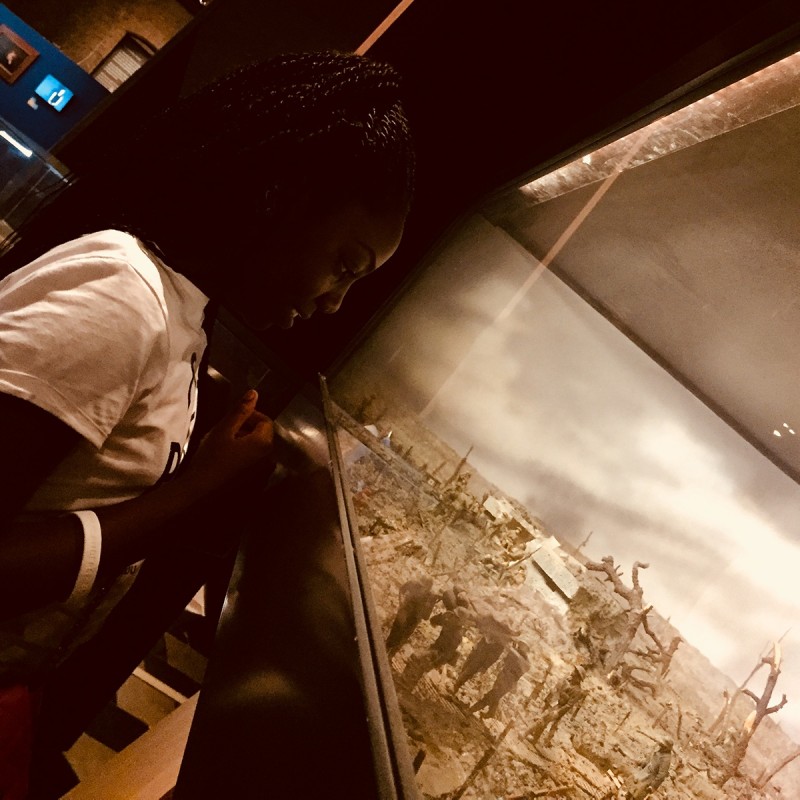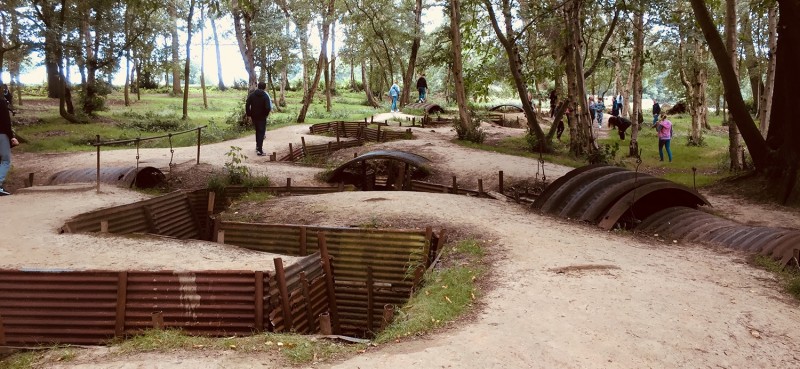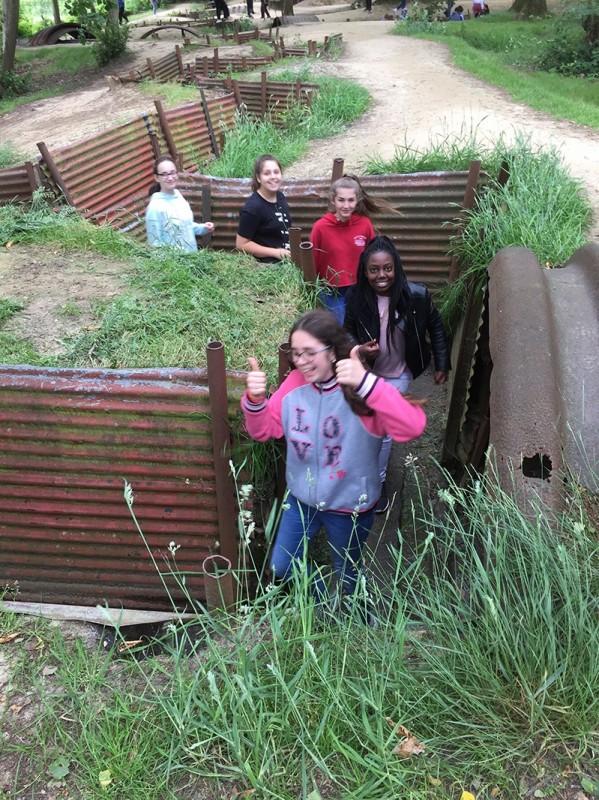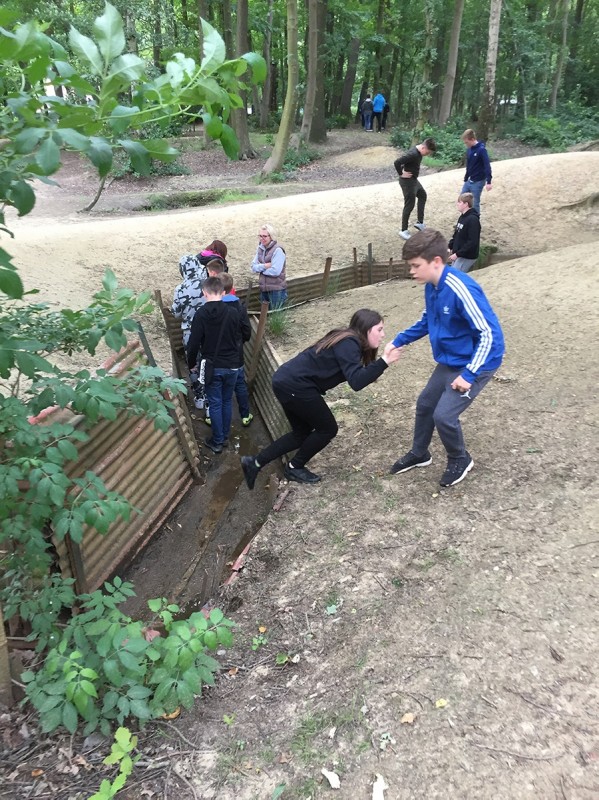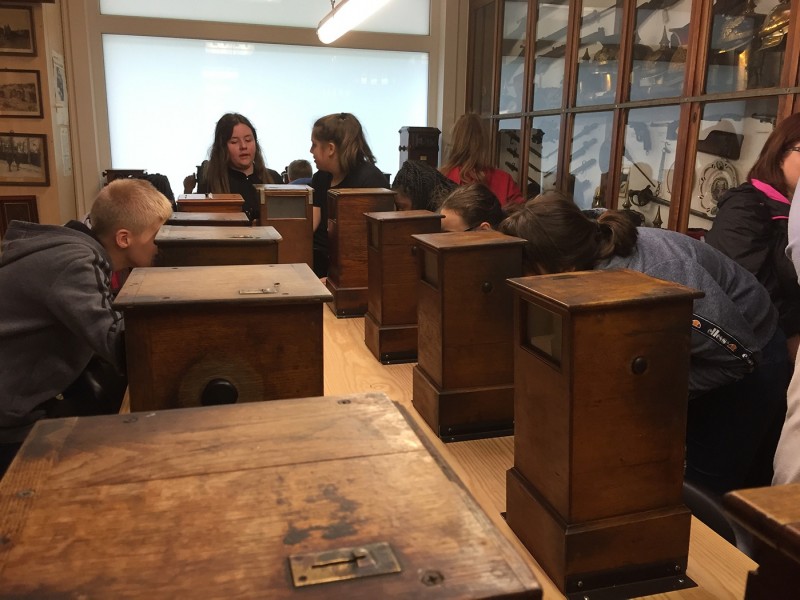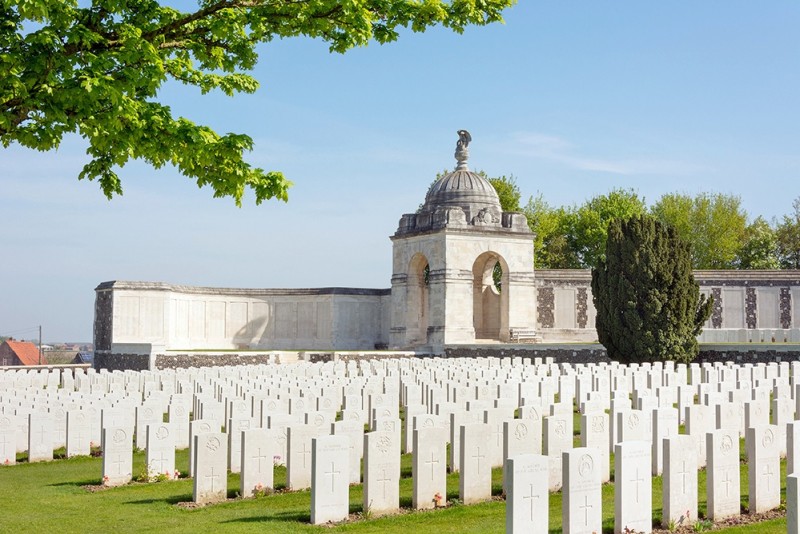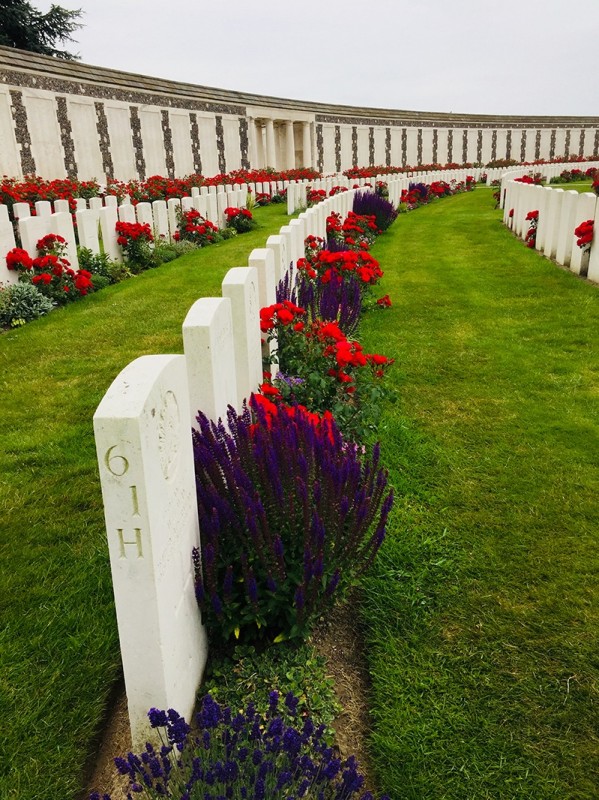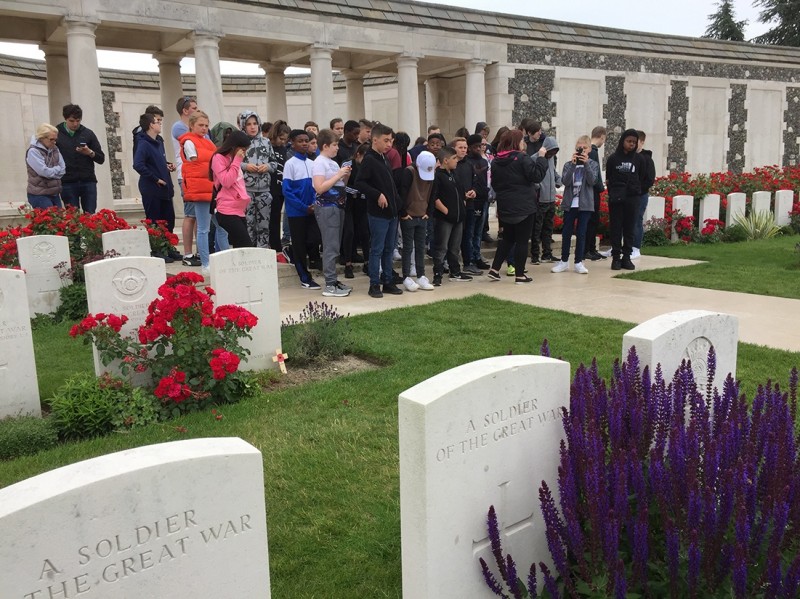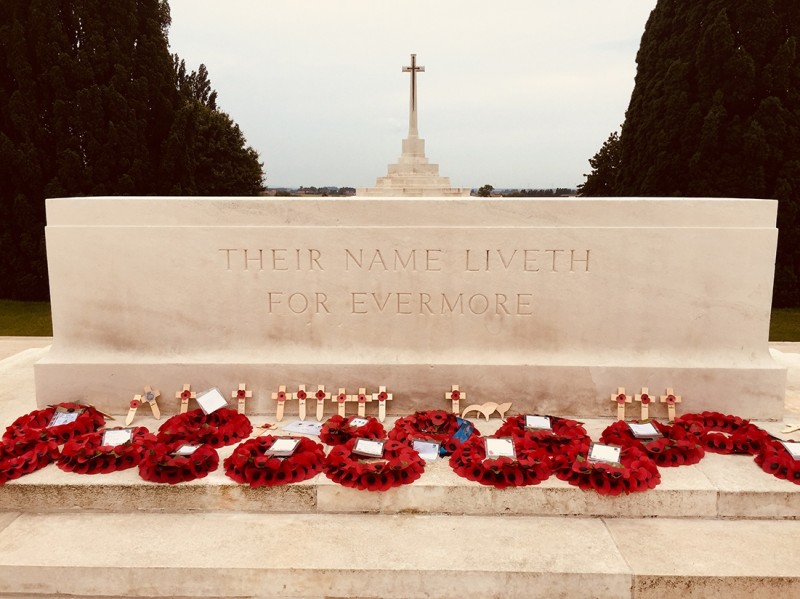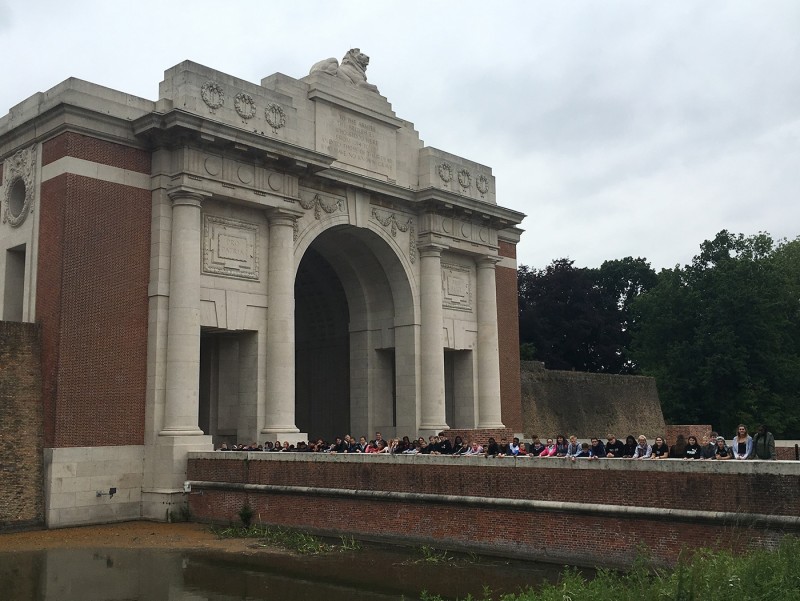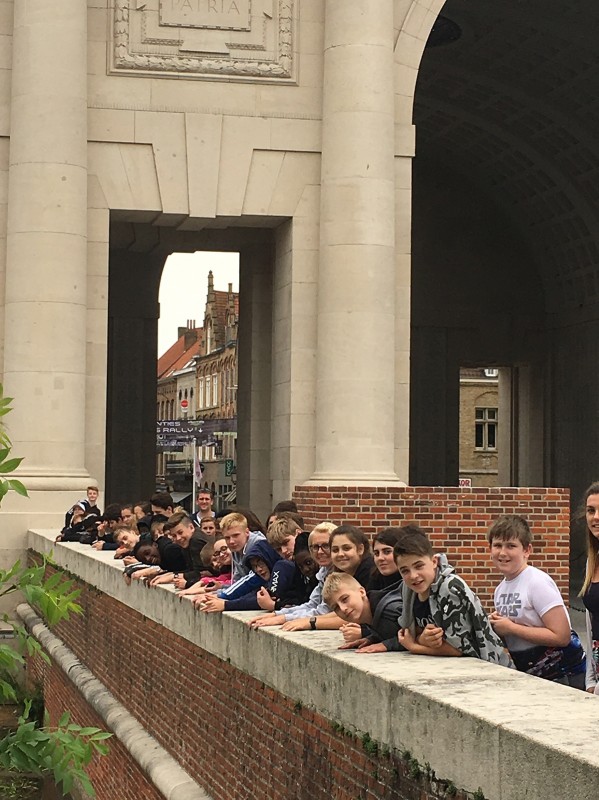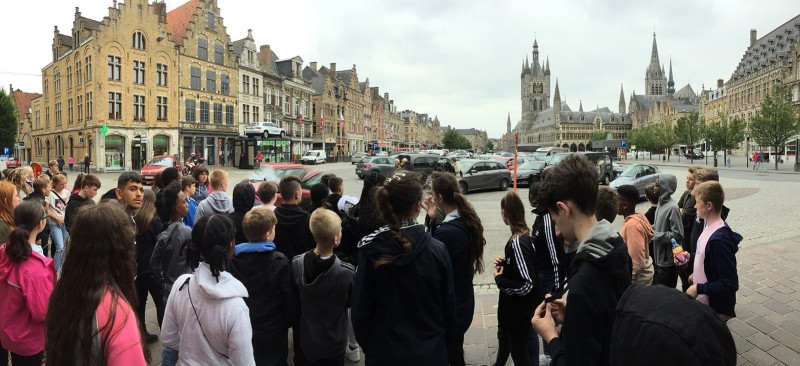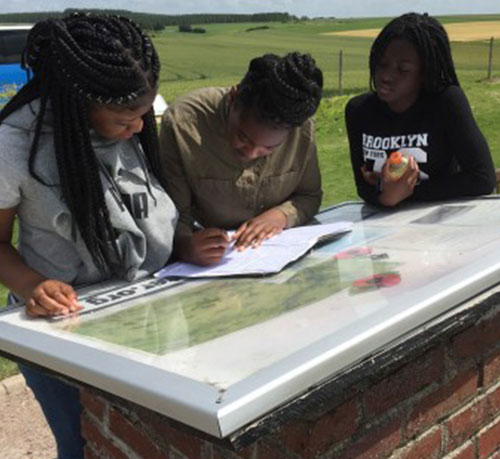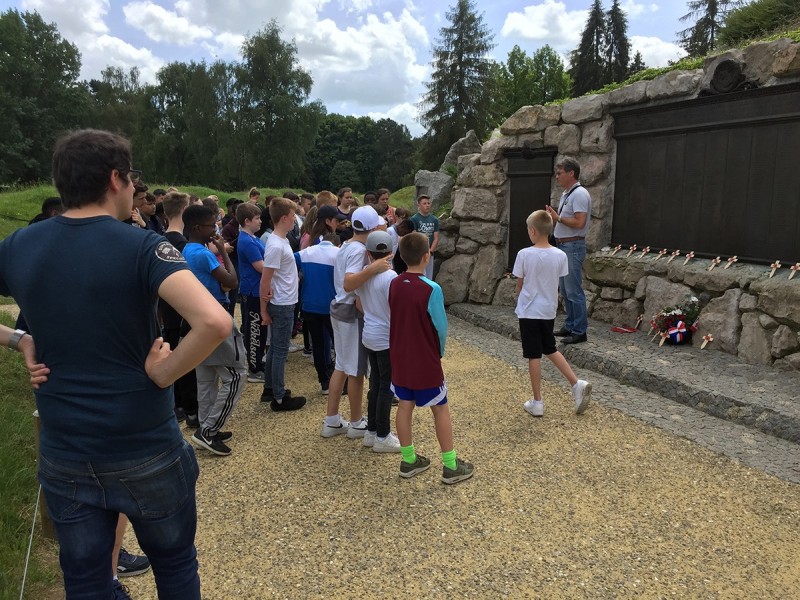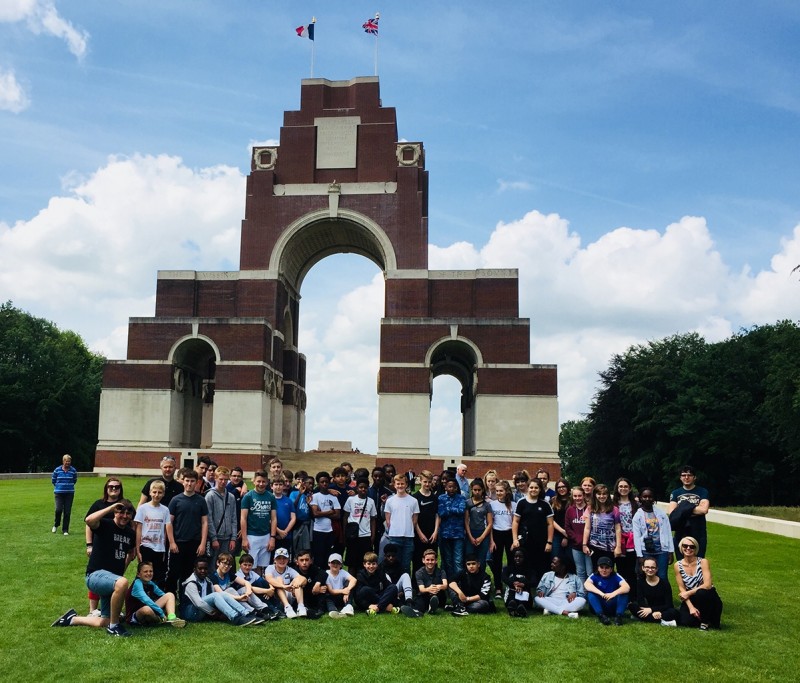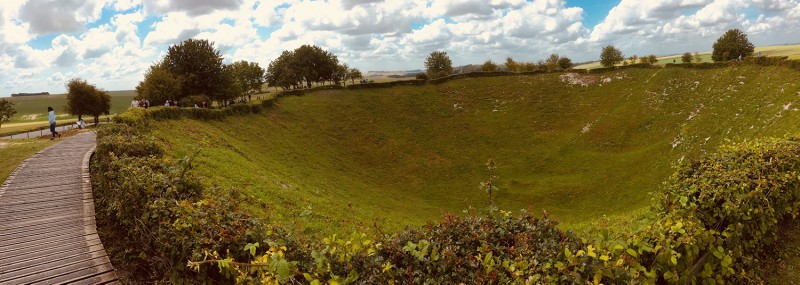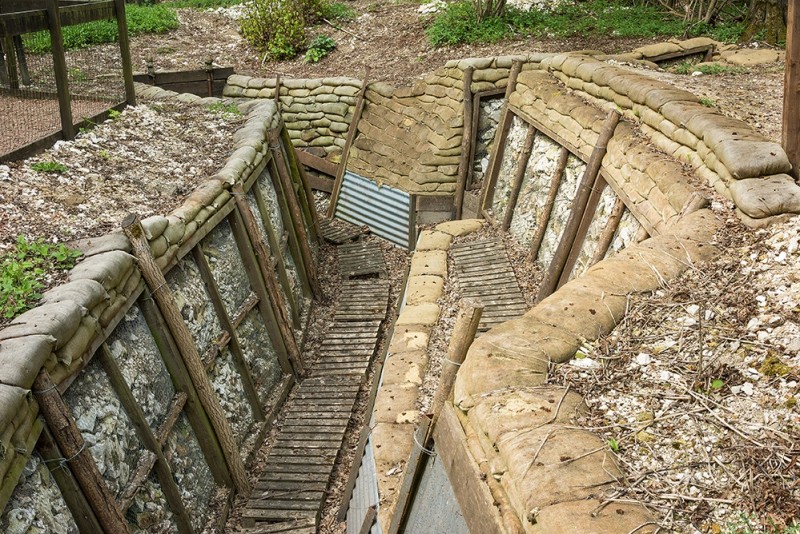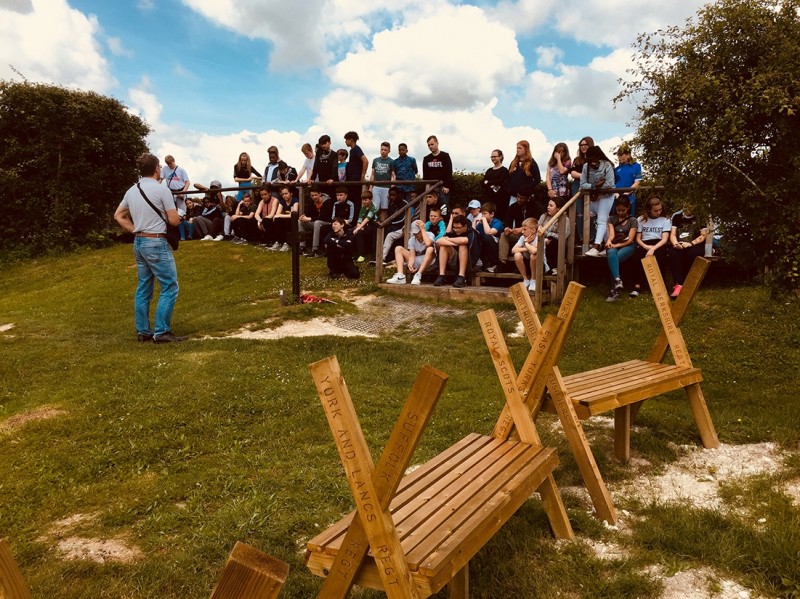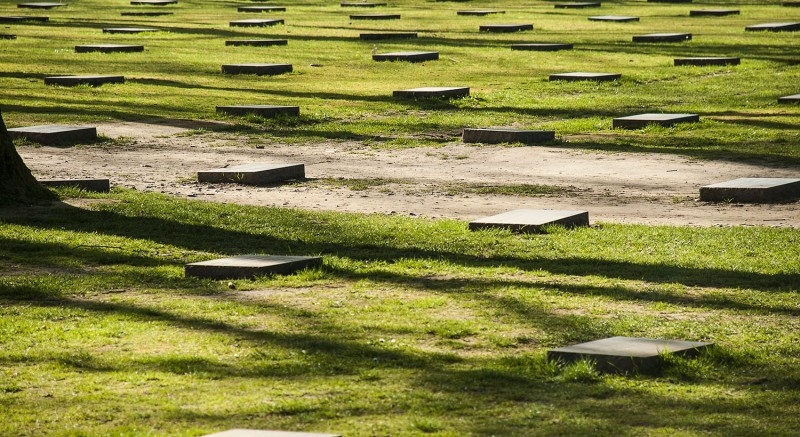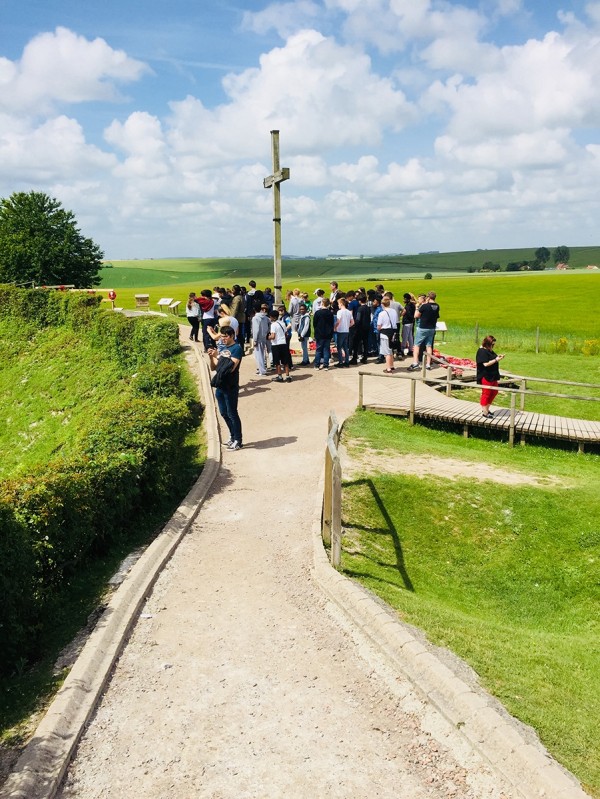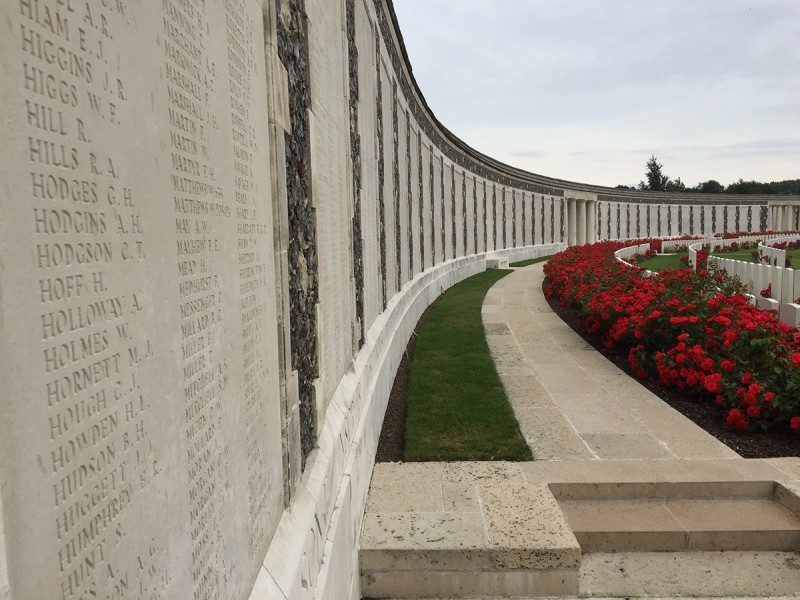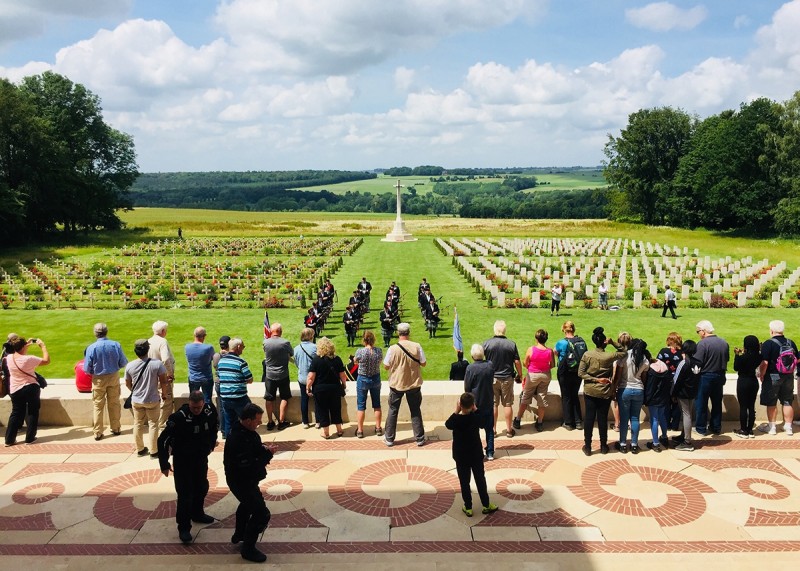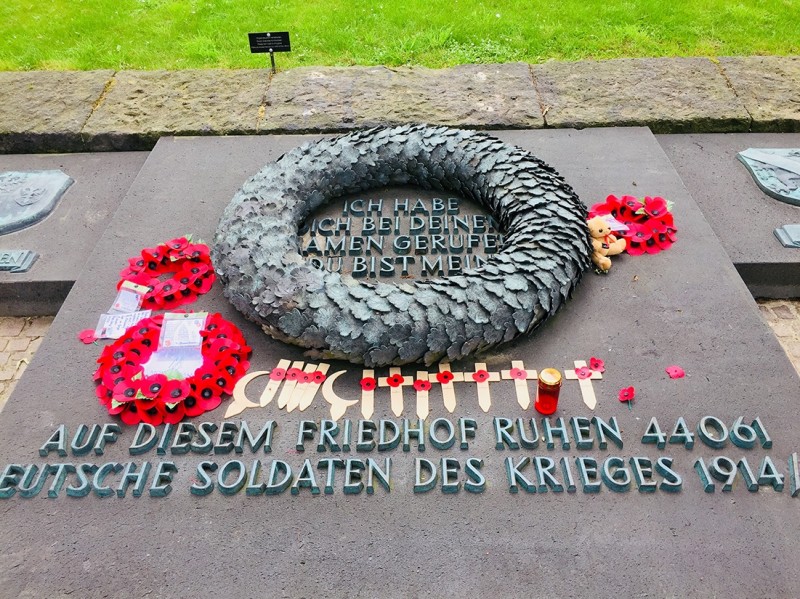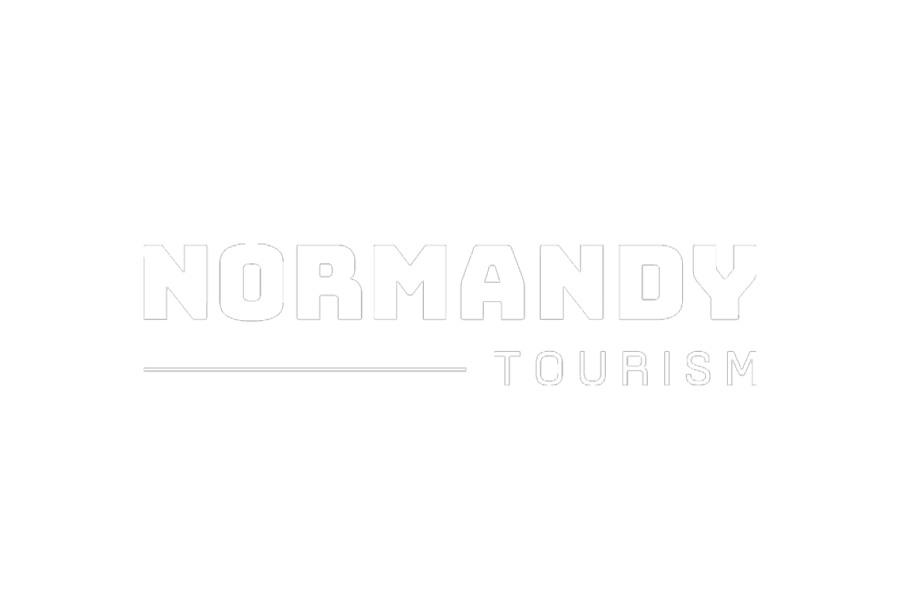WWI tour to Ypres & Somme by coach: 4 days, 3 nights
With its historical significance during WWI on the battlefields of Ypres, this tour is a perfect choice to aid students’ understanding of this period in history. Visits to the war museums, memorials and other sites, will give the students first-hand experience of the living conditions and destructiveness of war. This 4 day option gives you an extra day to explore the Somme region in addition to Ypres. New educational workshops available – see our ‘In Flanders Fields Museum’ information under excursions.
Similar tours
Suggested itinerary
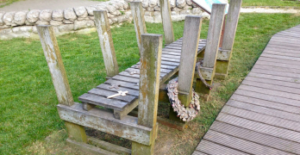
Day one
- Depart from school by coach
- Connect with channel crossing
- Poperinge
- Arrive at accommodation
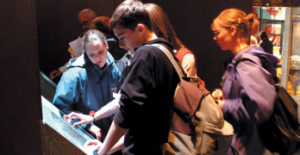
Day two
- In Flanders Field Museum OR Memorial Museum Passchendaele
- Sanctuary Wood
- Hill 60
- Tyne Cot Cemetery
- Langemark Cemetery
- Menin Gate
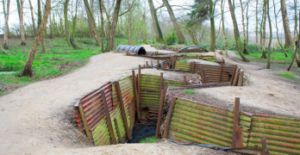
Day three
- Visit the Somme region
- Beaumont-Hamel
- Lochnagar Crater
- Somme 1916 Museum
- Thiepval cemetery and woods
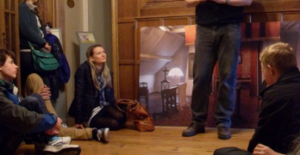
Day four
- Depart accommodation
- Essex Farm
- Yorkshire Trench and Dug Out
- Return to the UK on coach
Tour gallery
Excursion locator map
Excursion Ideas

Town Trail
Subject range: Cultural, Language
What you’ll experience: ‘Hunt Fun’ treasure hunts are a great fun way to get your students out and about and exploring a town whilst on your tour, learning so much along the way. The treasure hunts will guide you past historical buildings, statues and monuments encouraging problem solving, team work, navigation skills and much more. Your treasure hunt packs contains treasure hunt booklets to complete.Select says: A treasure hunt will normally last about 2 hours but could be made longer by incorporating a lunch stop or another local visit. Available for selected towns within Belgium and France – speak to one of our travel advisors for further details.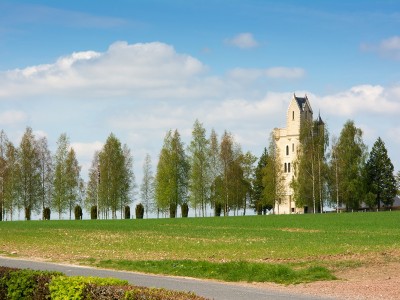
Ulster Tower, Thiepval
Subject range: History WW1
What you’ll experience: The tower is the memorial both to the 36th division and all Ulstermen who fought in the Great War and is an exact replica of Helen’s Tower, County Down, near the 36th Division’s training ground in Belfast. The monument is located near to the Schwaben Redoubt which the Division attacked on July 1st, 1916.Select says: A visitor centre is on the site displaying artefacts, including items recovered from the battlefields around the Memorial Tower, and personal items related to the soldiers of the 36th Ulster Division.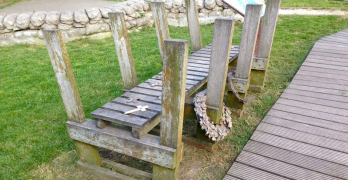
Yorkshire Trench and Dugout
Subject range: History WW1
What you’ll experience: The Yorkshire trench was discovered when developing an industrial site. A memorial site was constructed with the trench restored along its original route, including a deep dug-out from 1917. A series of information panels give the visitor graphic representation of trench warfare.Select says: Students can gain real understanding of the tight spaces the soldiers occupied in the trenches.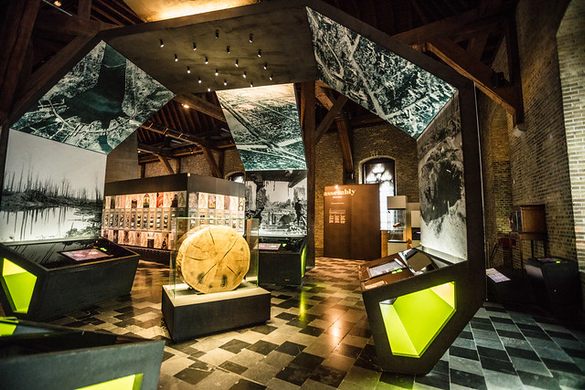
In Flanders Fields Museum
Subject range: History WW1
What you’ll experience: A superb museum with hundreds of authentic objects and images from WWI which are presented in a modern, experience-orientated layout. Multimedia interactive installations and lifelike characters give the visitor an authentic experience of life on the front, emphasising the personal stories as well as the larger conflict. Visitors will find no glorification of war; rather the museum suggests the futility of war especially as seen in Flanders during WWI. Following closure for refurbishments, the museum reopened in June 2012 – it is well worth a return visit if you haven’t been back since.Select says: There are educational workshops available in conjunction with the museum: 10-12 years workshop – Andrew’s Dream Museum. The theme of the package is the book ‘Andrew’s Dream Museum’. 10-15 years workshop – Coming World Remember me. A unique opportunity for students to create a statue as part of the land art installation which will be set up in a part of former no-man’s land in 2018 commemorating 600,000 soldiers and civilians who died or became fatally wounded in and around Ypres between 1914 and 1918. 13-15 years workshop – Home by Christmas…or how ‘the big picnic’ evolved into the world’s first industrial war. Downloadable education packs also available via the website.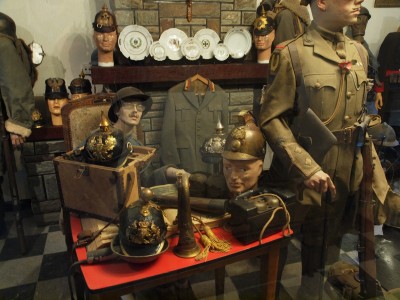
Sanctuary Wood Museum
Subject range: History WW1
What you’ll experience: One of the few places in the area where students can see a trench layout and gain understanding of the landscape and terrain soldiers fought on during the Great War. The museum contains a large number of relics and artefacts, including Stereoviews which bring photographic imaging into 3-D (although please note that some images are highly graphic and may be potentially upsetting).Select says: Nearby, Sanctuary Wood CWGC Cemetery contains over 2,000 burials. Close to Sanctuary Wood Museum is the Canadian Memorial at Hill 62. There is also a café here.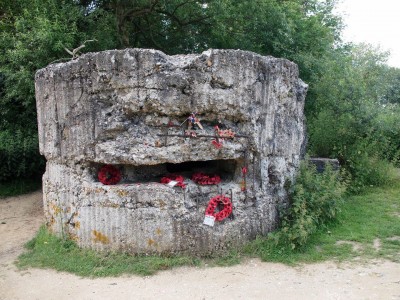
Hill 60
Subject range: History WW1
What you’ll experience: Hill 60 is a memorial site that was an invaluable vantage point much fought over by both sides during WWI. The hill is shaped by small craters and hillocks formed during the desperate fighting. The memorial site is the final resting place for many soldiers who remain buried somewhere beneath. Hill 60 was so called on British military maps because the ground was 60 metres above sea level, man-made in the 1850s, having been created by the spoil from the cutting for a railway line.Select says: The Memorial Site also has the remains of several concrete bunkers and craters from the 1915, 1916 and 1917 battles.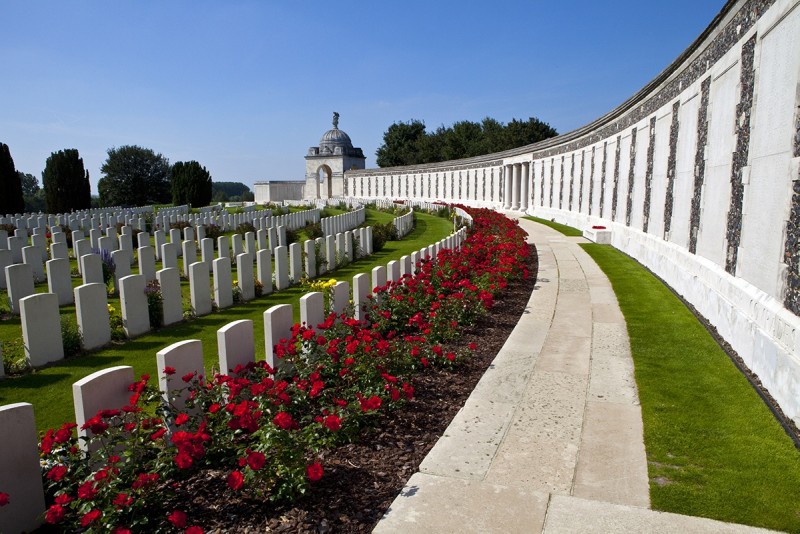
Tyne Cot Cemetery and Memorial
Subject range: History WW1
What you’ll experience: The largest Commonwealth war cemetery in the world and resting place of nearly 12,000 soldiers. Many of those who died in 1917 fighting to capture the village are buried here. The long stone wall of the Tyne Cot Memorial carries the names of servicemen from the United Kingdom and New Zealand who died between 15 August 1917 and the end of the war with no known grave.Select says: This visit is excellent for giving students some sense of the sheer scale of loss during WWI as the Memorial Wall carries nearly 35,000 names.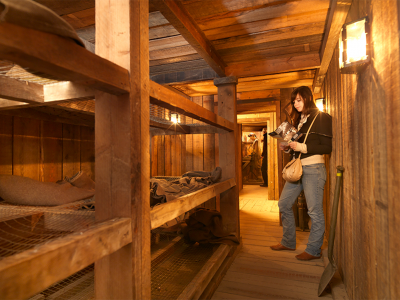
Memorial Museum Passchendaele 1917
Subject range: History WW1
What you’ll experience: The museum gives an overview of WWI in the region and the Battle of Passchendaele where, in 1917, half a million casualties fell in one hundred days for a gain of only 8km of ground. Over five floors there is much to see including a museum, replica dugouts and trenches, and the Hall of Reflection.Select says: There are some realistic experiences for your students, including trying on a claustrophobic gas mask and lifting the lid of small boxes to sniff inside and get an idea of how disgusting the different gas weapons could be. The German and British trenches are an excellent opportunity for compare and contrast of technology and the attitudes that determined the technology of trench warfare.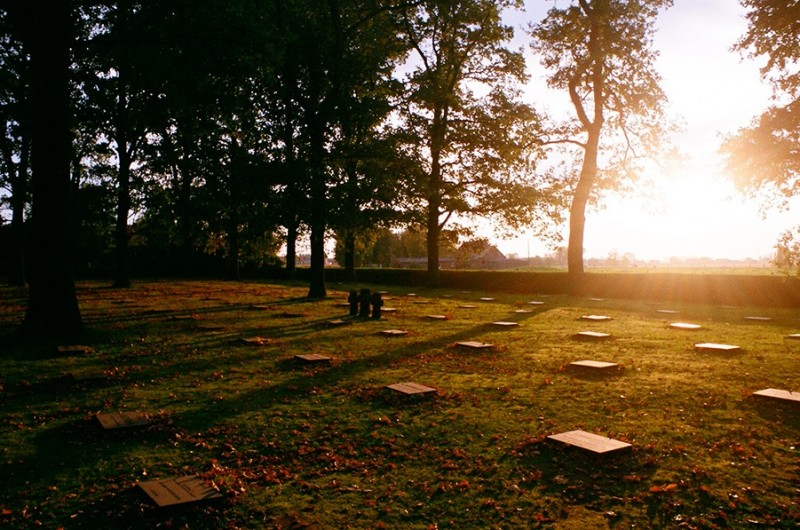
Langemark German Cemetery
Subject range: History WW1
What you’ll experience: More than 44,000 soldiers are buried in this German war cemetery. The village was the scene of the first gas attacks by the German army, marking the beginning of the Second Battle of Ypres in April 1915. A great comparison with Tyne Cot Cemetery.Select says: Within the cemetery is a sculpture of four mourning figures by the Munich sculptor Professor Emil Krieger. Added in 1956, they are said to watch over the fallen.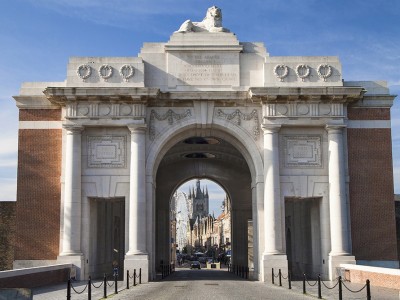
Menin Gate
Subject range: History WW1
What you’ll experience: The Menin Gate memorial bears the names of over 54,000 officers and men from United Kingdom and Commonwealth Forces (except New Zealand and Newfoundland) who fell in the Ypres Salient before 16th August 1917 and have no known grave. Each night at 8 pm the traffic is stopped at the Menin Gate while members of the local Fire Brigade sound the Last Post in the roadway under the Memorial’s arches.Select says: Have a look at the nearby Indian Memorial honouring the 130,000 Indian soldiers who fought during WWI in the Ypres Salient and Northern France. Also consider the value of the model of the Gate with Braille to consider how we all need a means of remembrance.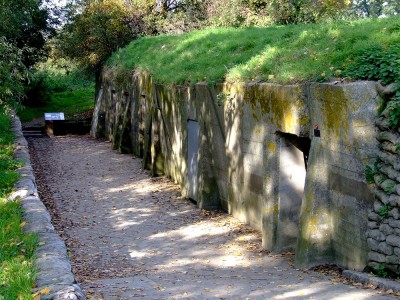
Essex Farm Cemetery
Subject range: History WW1
What you’ll experience: The cemetery was used by several British divisions holding this sector from 1915 to August 1917. 1,200 servicemen from several divisions are buried or commemorated here. At the rear of the cemetery there is a concrete bunker – the site of a British Army Advanced Dressing Station (A.D.S.). The location is believed to be the place where the Canadian army doctor, Major John McCrae, composed the famous poem In Flanders Fields. The cemetery is the final resting place of Rifleman Valentine Joe Strudwick – aged only 15 he is one of the youngest British casualties of the Great War to die in action.Select says: Link your visit with Rebecca Steven’s novel Valentine Joe and John McCrae’s famous poem In Flanders Fields.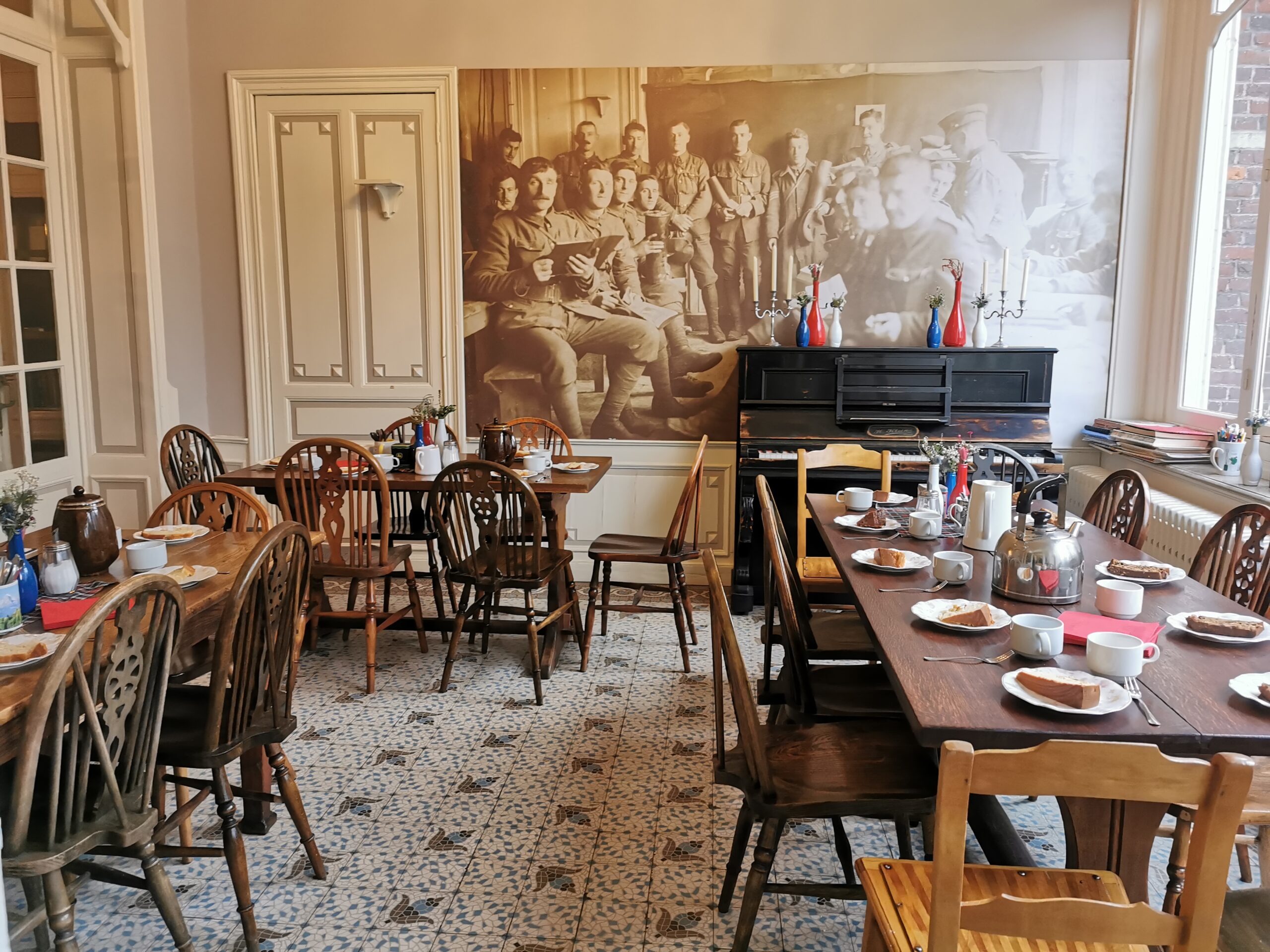
Talbot House
Subject range: History WW1
What you’ll experience: Visitors can view a permanent exhibition of life behind the lines in the old hop barn, discover what a WWI concert party looked like in the concert hall, and experience where soldiers came to rest in the beautiful gardens. During WWI, Poperinge was part of unoccupied Belgium. Talbot House provided rest and recreation to all soldiers, regardless of their rank, away from the dreadful conditions of the Western Front. During your visit to Poperinge you could also visit the ‘execution cells’ where some of the British soldiers condemned to execution during the Great War were kept awating their fate. These are located close to Talbot House in the town hall in the main square.Select says: Close to Poperinge is Lijssenthoek Military Cemetery where there is a modern visitor centre with displays and features, such as an audio wall where visitors can listen to extracts from war diaries, letters and witness accounts. Importantly, the cemetery is full of fascinating stories, an England Rugby Union Captain, a nurse, a General and several Americans are buried here.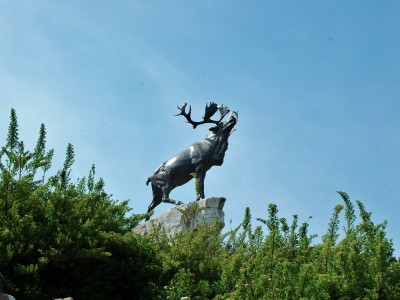
Beaumont-Hamel Newfoundland Memorial Park
Subject range: History WW1
What you’ll experience: Located near Beaumont Hamel, this park is one of only a few sites on the Western Front where the ground has remained largely untouched since the end of WWI. The great caribou memorial stands at the highest point of the park, emblem of the Royal Newfoundland Regiment. Something of the terrible problem of advancing over such country can be appreciated by visitors as the actual frontline trenches are still visible. There is also a visitor’s centre featuring a copy of the Newfoundland Book of Remembrance, memorabilia and short video clips.Select says: Free guided tours are possible but must be pre-arranged.
Lochnagar Crater
Subject range: History WW1
What you’ll experience: The Lochnagar Crater at La Boiselle is almost 91m in diameter and 21m deep. The result of a mine explosion on 1st July 1916, this is the largest surviving crater on the Western Front, and one of the most affecting sites on the Somme Battlefields. It is a unique memorial to all those who suffered in the Great War. It is dedicated to peace, fellowship and reconciliation between all nations who fought on the Western Front.Select says: The site website has a schools page for pre-tour. You may also be interested in their annual competition for young people aged between 10-17 yrs designed to encourage interest in this unique Great War Memorial (Entries for the £200 award can be in any medium including Art, Prose, Poetry, Photography or Music).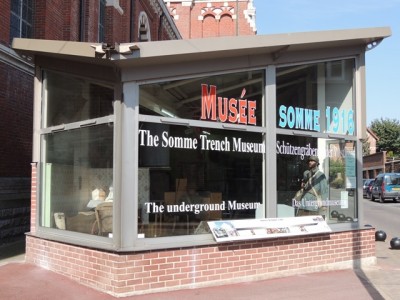
Somme 1916 museum in Albert
Subject range: History WW1
What you’ll experience: Somme 1916 museum is located in a tunnel complex beneath the city that was also used as shelters in WWI. It displays various objects and weapons used in WWI and shows the appearance of new technologies used such as gas and tanks. Fifteen scenes display the trenches and help understand the reality of the French, British and German soldiers during WWI.Select says: There are excellent educational workbooks available to download from the Somme 1916 Museum website prior to your tour.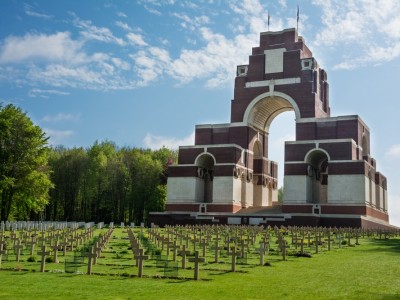
Thiepval Memorial to the Missing & Museum
Subject range: History WW1
What you’ll experience: The Thiepval Memorial to the Missing of the Somme is a major war memorial to 72,191 missing British and South African men who died in the Battles of the Somme of the Great War between 1915 and 1918 with no known grave. The names of the missing are etched into the memorial along with a large inscription reading ‘Here are recorded names of officers and men of the British Armies who fell on the Somme battlefields between July 1915 and March 1918 but to whom the fortune of war denied the known and honoured burial given to their comrades in death’. The Thiepval Visitor Centre is located a short distance from the Thiepval Memorial and now has a museum with new galleries themed on the battles of the Somme and the memory of lost soldiers. The permanent exhibition presents a large collection of artefacts, archaeological finds, multimedia displays and life-sized installations.Select says: It is also possible to visit the Thiepval Wood Trenches (accessible by guided tour only), providing insights into life in the trenches as well as the preparation for the attack by the men of Ulster on 1 July 1916. It should be remembered that munitions are still being found and it is important to keep to the designated paths and to touch nothing.
Hooge Crater Museum
Subject range: History WW1
What you’ll experience: The Hooge Crater Museum has become Belgium’s best private WWI museum. With its life-size reconstructions of World War I battle scenes, its extensive collection of weapons, equipment and photographs, this museum is highly recommended. During a visit to the Ypres Salient, Hooge and this unique war museum is an absolute must for the tourist, collector or historian!
WWI trip to Ypres & Somme by coach: 4 days, 3 nights Accommodation
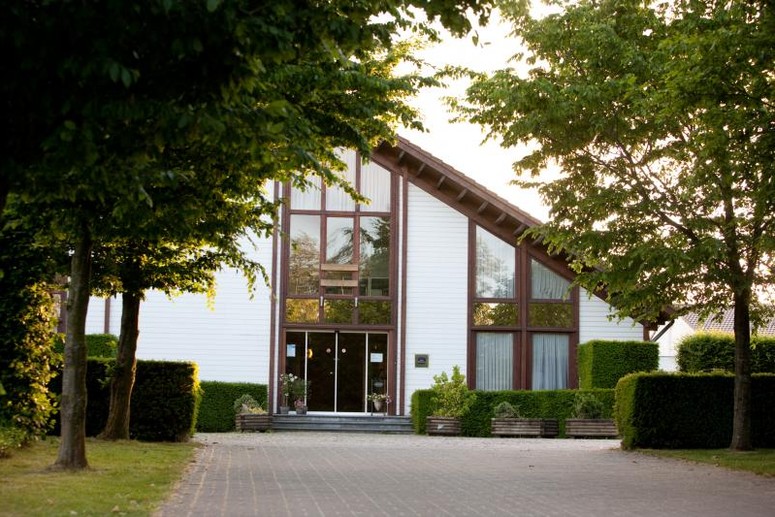
Ypres Lodge
Location: Close to Ypres
Capacity: 365
This hotel is great for school groups - the location is just outside Ypres but is still within walkable distance (approximately 15-20mins).
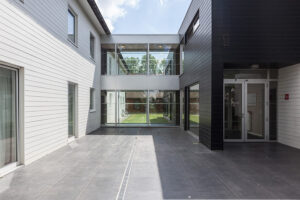

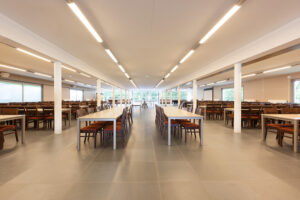
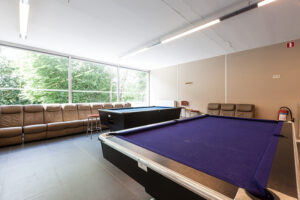
Rooms: All rooms have en-suite facilities.
Facilities: Restaurant, meeting rooms, common room.
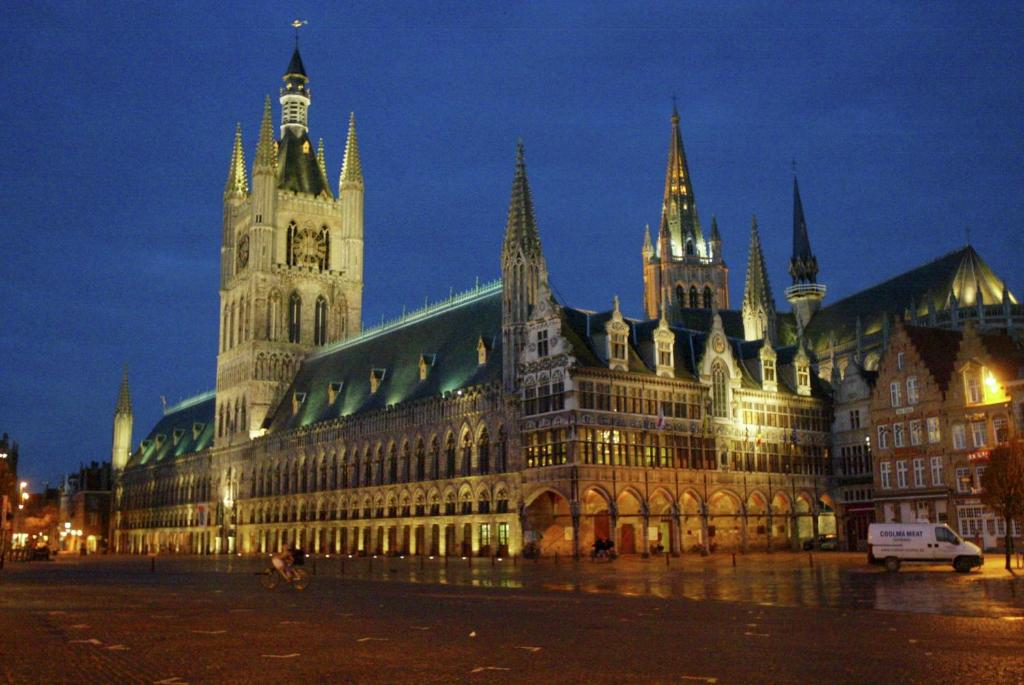
Gasthof 't Zweerd
Location: Ypres
Capacity: 52
Located directly on the Grote Markt in Ieper, the Gasthof 't Zweerd is less than 100 metres from the Cloth Hall. It features restaurant and a bar.
The In Flanders Field Museum is located inside the Cloth Hall, a 3-minute walk from the hotel. The Last Post ceremony at the Menin Gate is 250 metres away. The property is 70 km from central Bruges, while the central railway station is 1 km away.

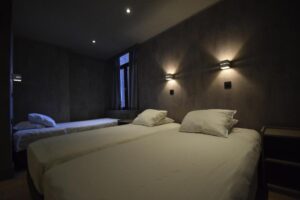
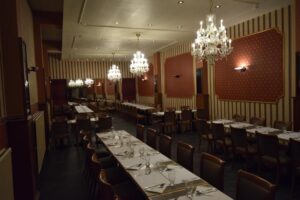
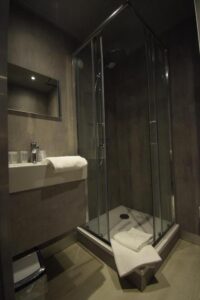
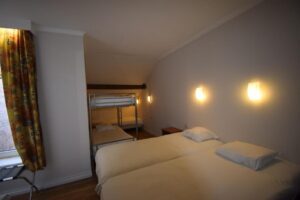
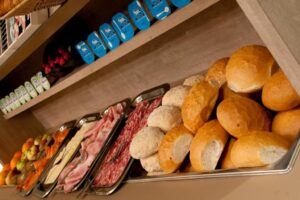
Rooms: Each room at the Zweerd includes a TV and radio. They all come with a private bathroom equipped with shower. Some rooms offer views over the Grote Markt or the city.
Facilities: Wifi is available
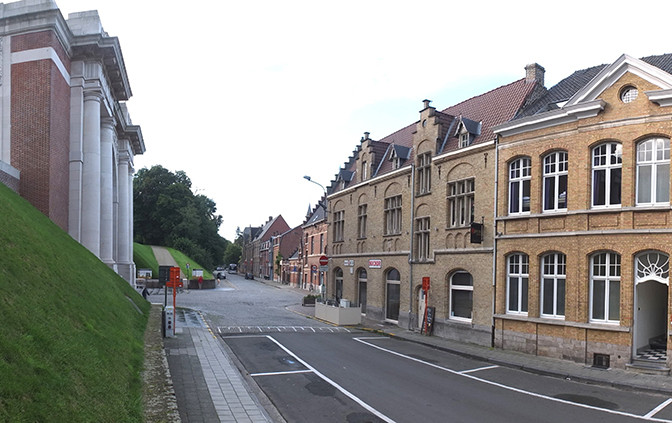
Menin Gate Youth Hotel
Location: Ypres
Capacity: 55
This youth group hotel is in a great location right by the Menin Gate itself! Sole occupancy is possible if the group has more than 35 people.
Select says: There is a bowling alley 15 minutes' walk away and a sports centre only 5 minutes away (football, tennis, jogging, swimming).
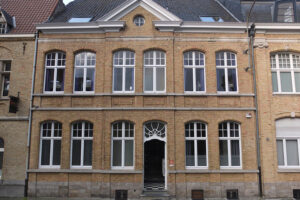
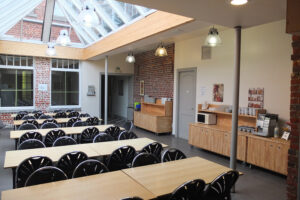
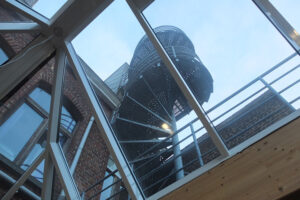
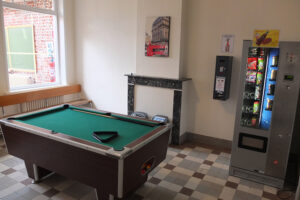
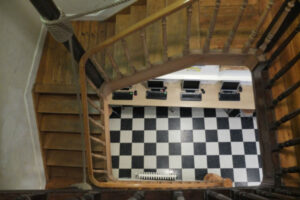
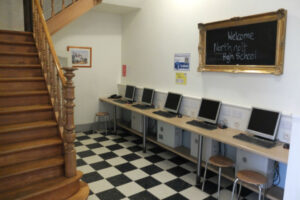
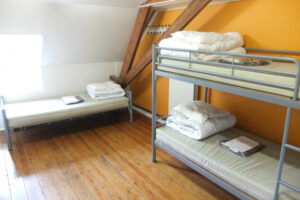
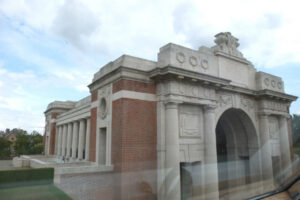
Rooms: All rooms have en-suite facilities. 55 beds in 11 bedrooms on 3 floors.
Facilities: Breakfast room, free Wi-Fi throughout the building, games room with a pool billiards table and vending machine, free internet suite: 5 computers free of charge with broadband internet access, cable television in the staff room.
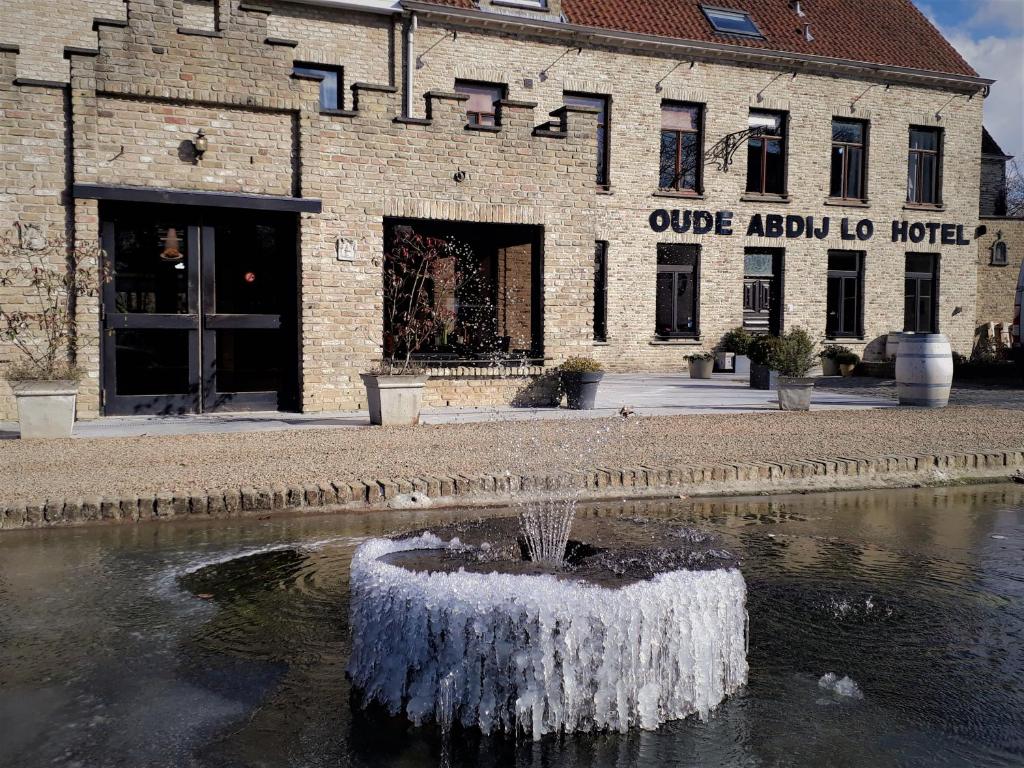
Oude Abdij
Location: Close to Ypres
Capacity: 200
Located in Lo-Reninge, 20 km from Plopsaland De Panne, Hotel Oude Abdij provides accommodation with a garden. Located 37 km from Dunkerque Train Station.
Phalempins Metro Station is 48 km from the hotel, while Colbert Metro Station is 48 km away. The nearest airport is Ostend-Bruges International Airport, 40 km from Hotel Oude Abdij.
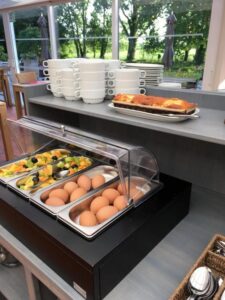
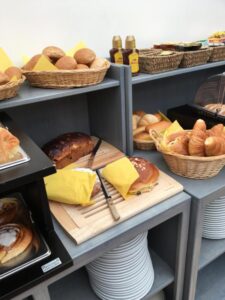
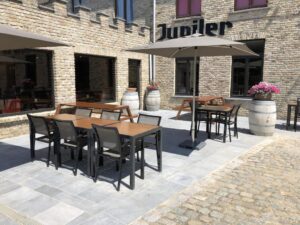
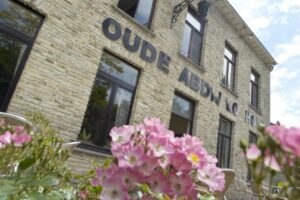
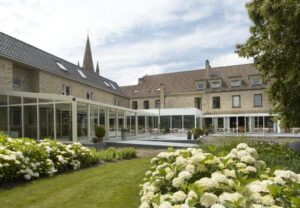
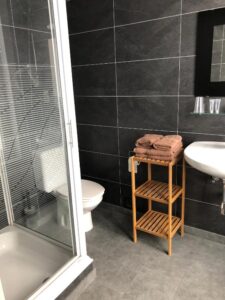
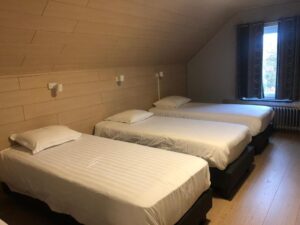
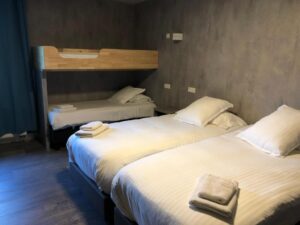
Rooms:
Facilities: Wifi available
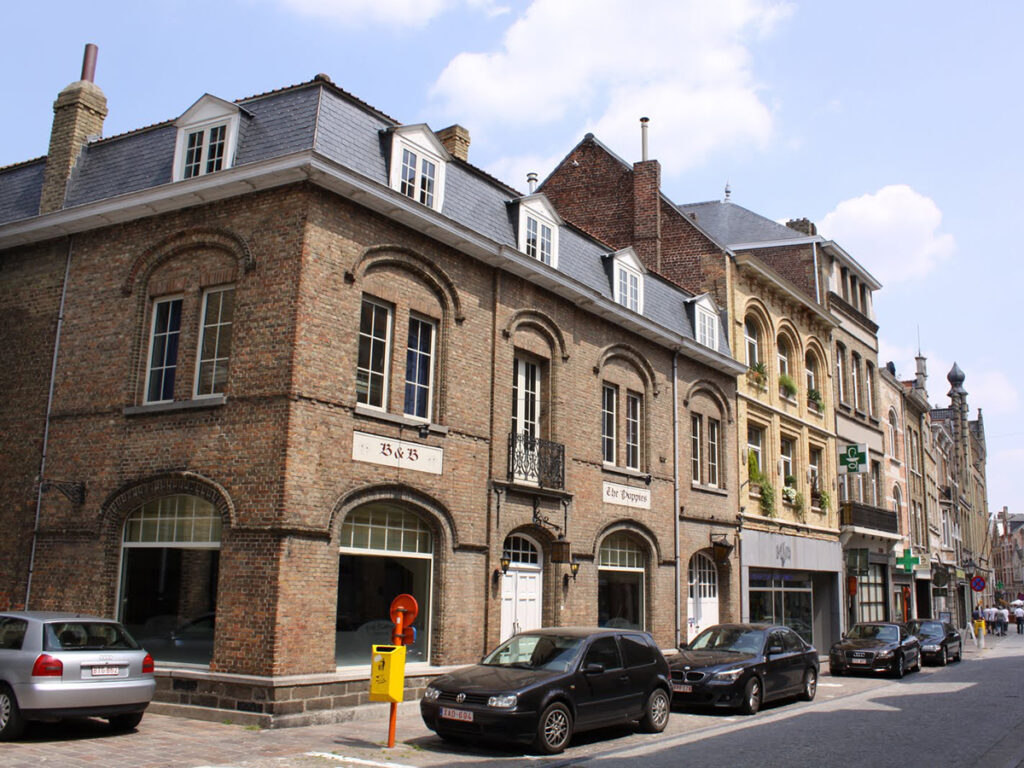
Poppies 1 & 2
Location: Ypres
Capacity: 130
Home sweet home for groups of up to 130 and a minimum of 25 in the historical center of Ypres. Located next to the market square of Ypres, The Poppies 1 & 2 is the ideal accommodation for history tours. Your stay in these authentic, classic, old School Hotel combined with its unique location will make your trip to the Ypres Salient" unforgettable.
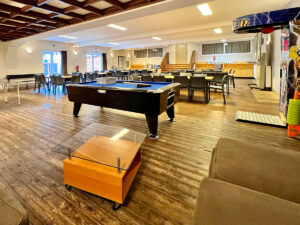
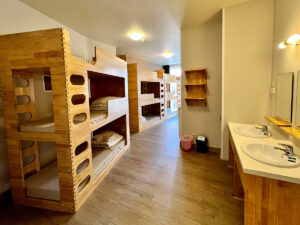
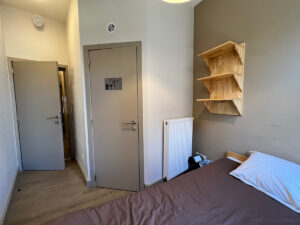
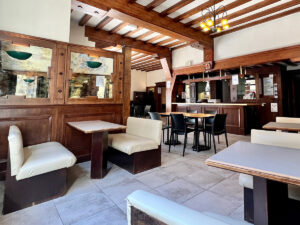
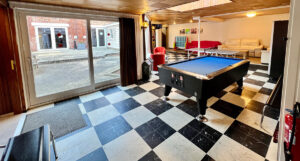
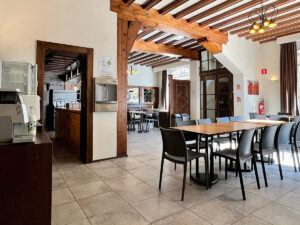
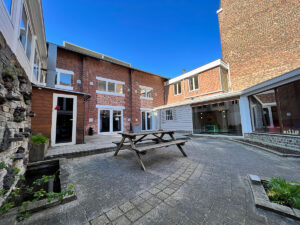
Rooms: Shower, toilet and washbasin in every room.
Facilities: Fast and secure wifi for free. Computers available with free internet access. Games Corner, ping-pong set and pool table. Projector and screen available on request. Vending machine with snacks and soft drinks. Intercom system throughout the building. Courtyard The Poppies 1 & 2. Safe available to store away passports. Tap water safe to drink.
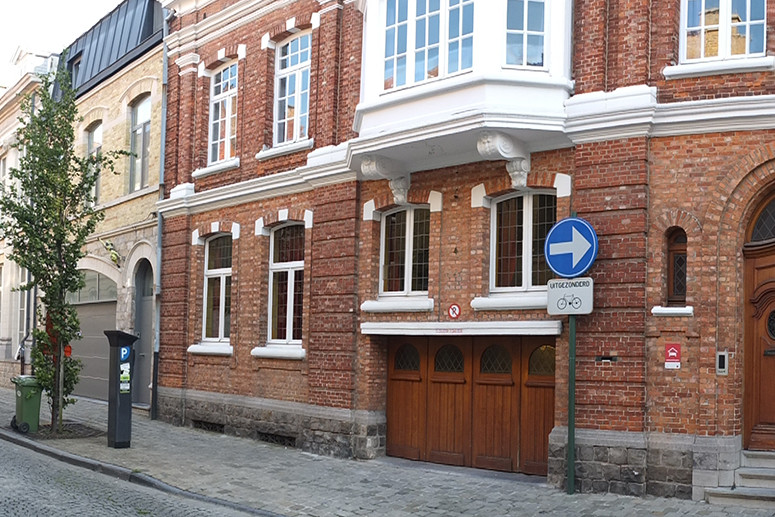
Salient Youth Hotel
Location: Ypres
Capacity: 102
This youth group specific hotel is situated just off the main square of Ypres. Sole occupancy is possible for groups with a minimum of 70 people.
Select says: There is a bowling alley 15 minutes’ walk away.
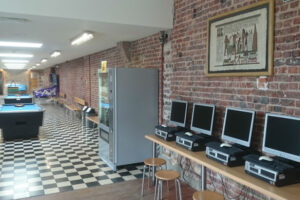
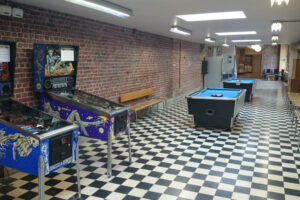
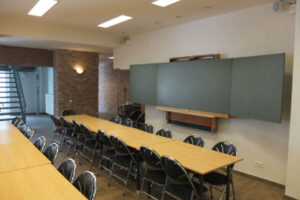


Rooms: All rooms have en-suite facilities.
Facilities: Breakfast room, Wi-Fi available, games room, computer room.
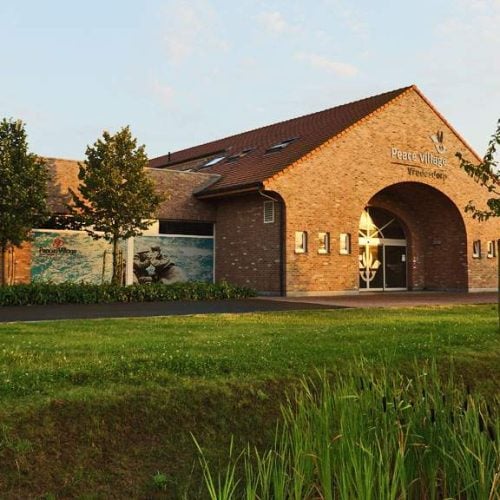
Peace Village
Location: Close to Ypres
Capacity: 164
In the heart of the Westhoek, Peace Village is the perfect base for groups to explore the beautiful region.
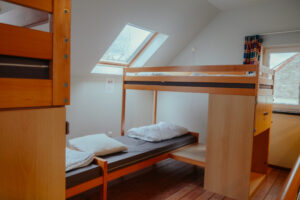
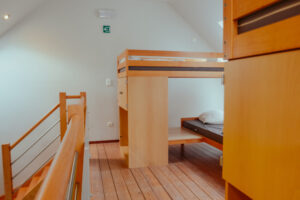
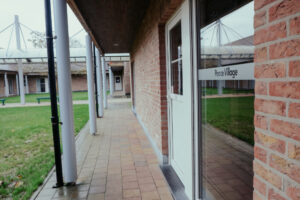
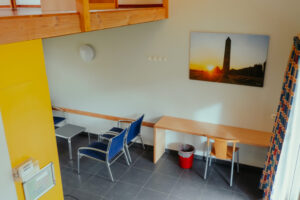

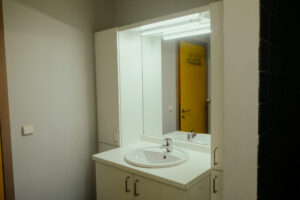
Rooms: Each room has a private desk with spacious sitting area, a separate toilet, a bathroom with a shower, a large mirror, a drying rack or hanger and a sink. There are plenty of electrical outlets and storage areas with coat racks throughout. On each bed is a soft pillow and down comforter for a wonderful night’s sleep.
Facilities:
Links to Learning
Learning areas:
KS3
Challenges for Britain, Europe and the wider world 1901 to the present day
The First World War and the Peace Settlement
A study of a significant society or issue in world history and its interconnections with other world developmentsKS4
Conflict and tension, 1894–1918 (AQA)
The British sector of the Western Front, 1914–18: injuries, treatment and the trenches (Edexcel)
War and British Society c.790 to c.2010 (OCR)
Britain in Peace and War, 1900–1918 (OCR SHP)
The Development of Warfare, c.1250 to the present day (WJEC 2017)
Empire, Reform and War: Britain, 1890-1918 (WJEC 2016)
The Development of Warfare, c.500 to the present day (WJEC 2016)
Historical Study: European and World (SQA)KS5
International Relations and Global Conflict, c1890–1941 (AQA)
Wars and Welfare: Britain in Transition, 1906–1957 (AQA)
The British experience of warfare, c1790–1918 (Edexcel)
The changing nature of warfare, 1859–1991: perception and reality (Edexcel)
Britain 1900–1951 (OCR)
International Relations 1890–1941 (OCR)
The Changing Nature of Warfare 1792–1945 (OCR)
Europe In An Age Of Conflict And Co-Operation c.1890-1991 (WJEC)
Historical Study: European and World (Higher) (SQA)
Clash of Ideologies in Europe 1900–2000 (CEA)
The Causes and Consequences of Great Power Conflict 1848–1945 (CEA)Select Extras:
Have you thought of selecting a relevant movie for the coach journey? We recommend War Horse (classified 12). We also recommend these stories set during WW1 for pre-tour/during tour/post tour:
Stories of WW1 – Tony Bradman
An engrossing anthology comprising of twelve moving tales by prize-winning authors. The short story format makes it a great option for use in the classroom and if your students prefer to dip in and out! Find out more and purchase here.Valentine Joe – Rebecca Stevens
When fifteen-year-old Rose visits Belgium, she can feel the deep scars left there by the Great War. But when she hears the sound of marching late at night, she does not expect to see the ghosts of the past from her window … This moving tale brings the past alive through a time slip and gives students an excellent way of empathising with the young soldiers serving at the front in WWI. Find out more and purchase here.

